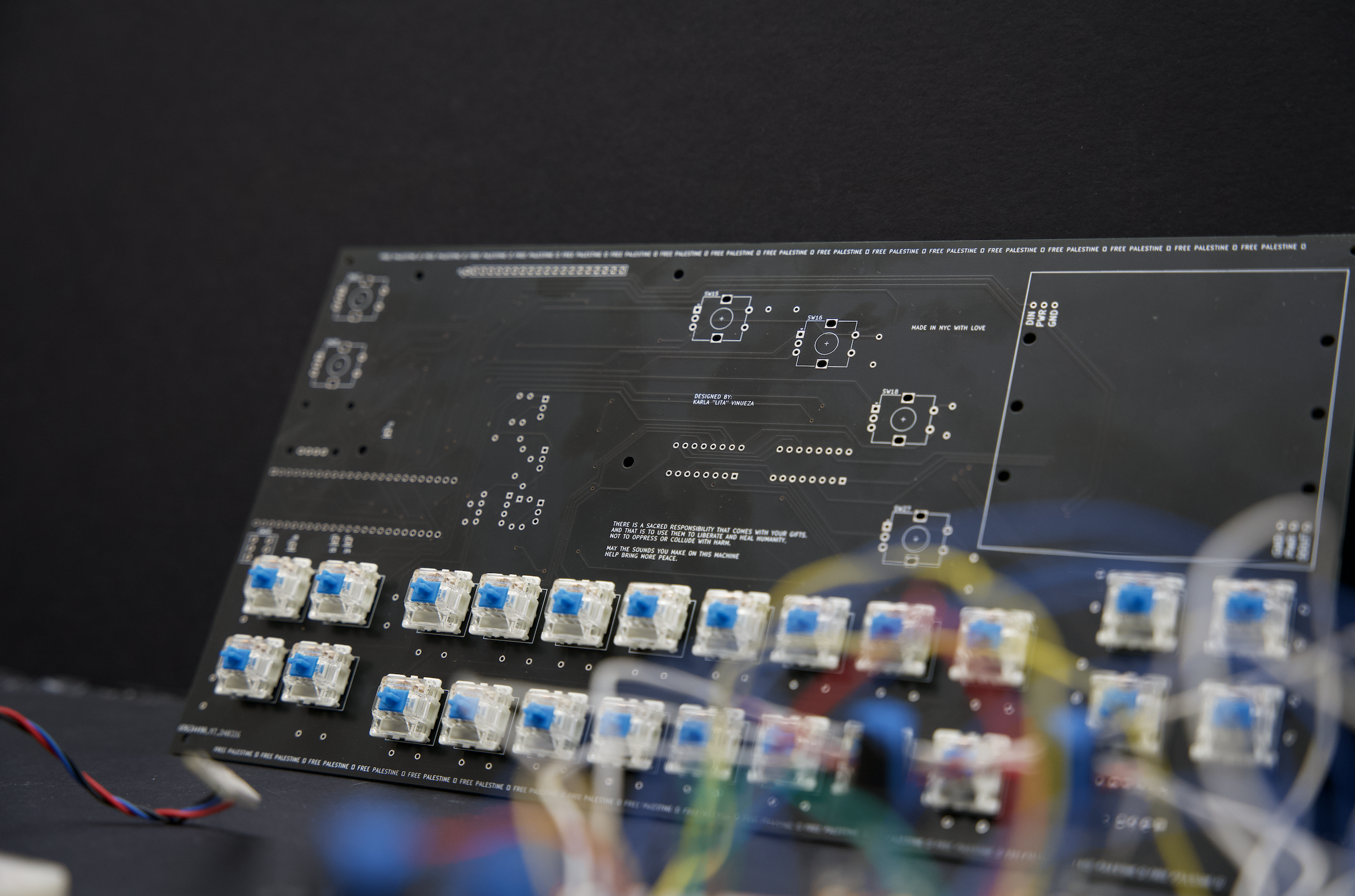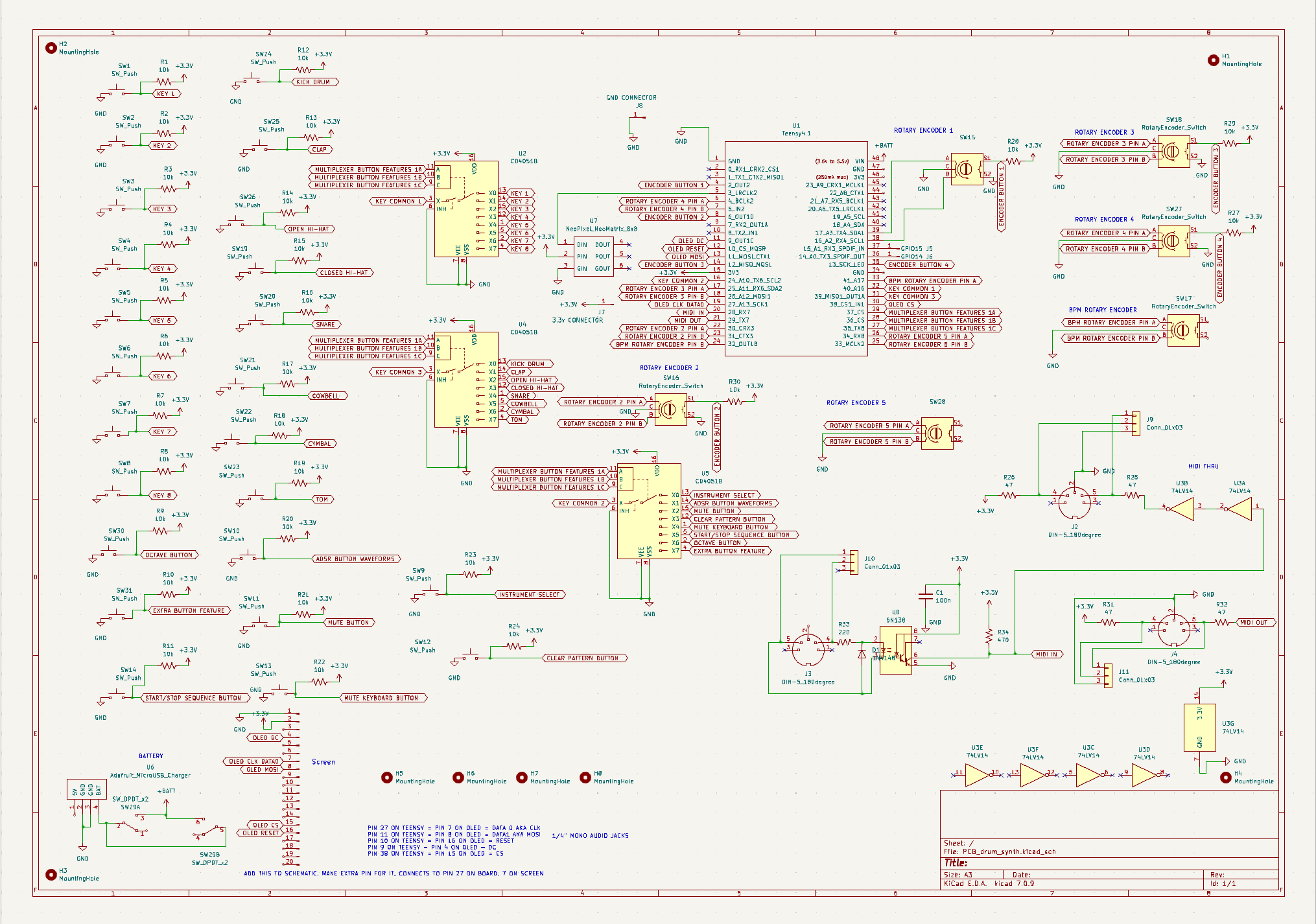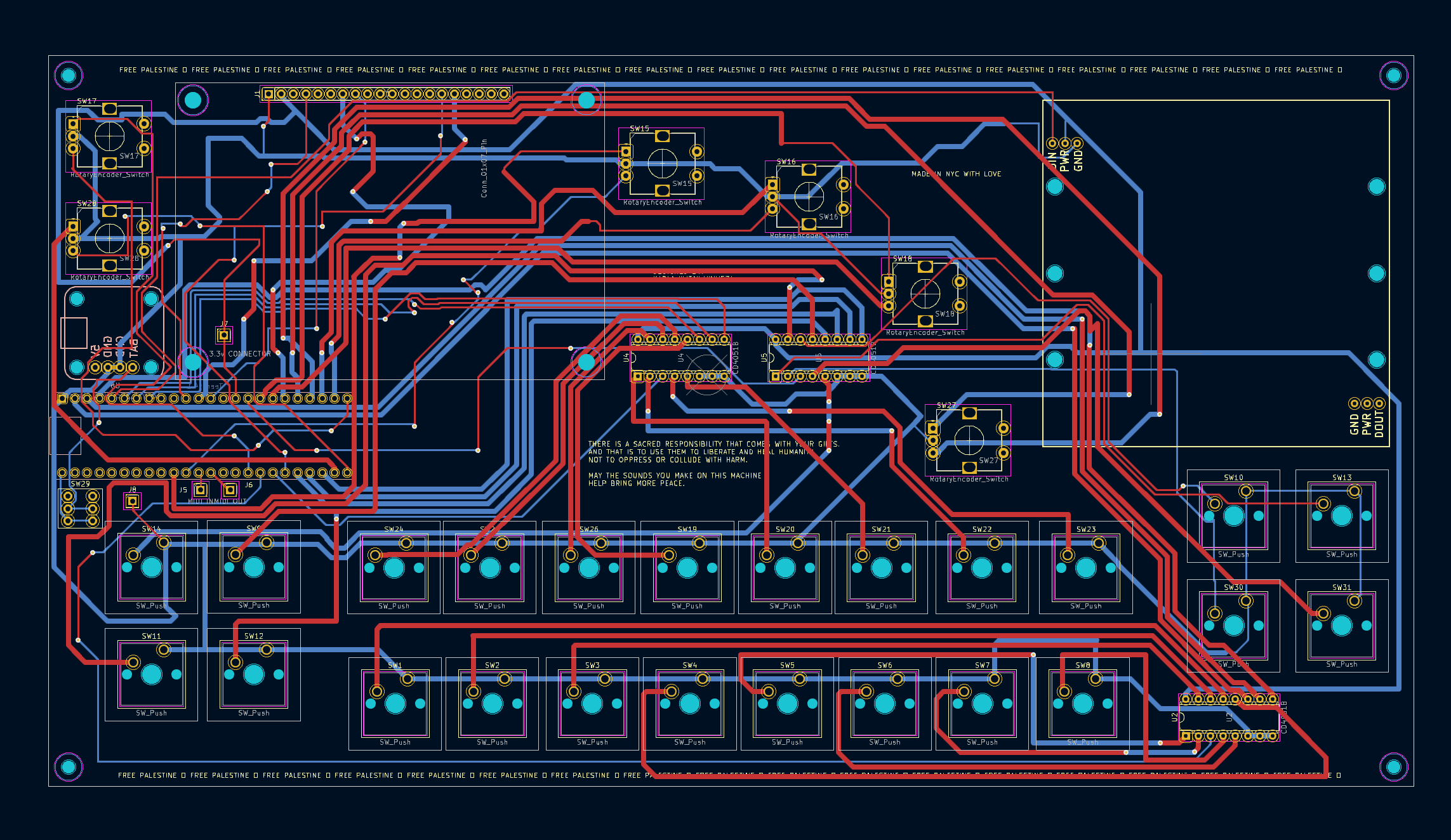12 distinct waveforms
7 preset percussion sounds & 1 vocal chant
Tuning system: Al-Farabi 25-tone/10-Fret Oud
5 octaves
8x8 NeoPixel grid providing a visual interface for step sequencing
Modulation tools like ADSR envelopes and LFOs allow for dynamic sound shaping.
MIDI IN/OUT/THRU ports for seamless integration with external hardware and MIDI clock synchronization.
Users can manipulate patterns with controls for start/stop, pattern clearing, channel selection, and editing for both drum and melody sequencing. Additional features comprise an OLED screen, BPM control, and effects such as delay, reverb and filter decay/attack.










